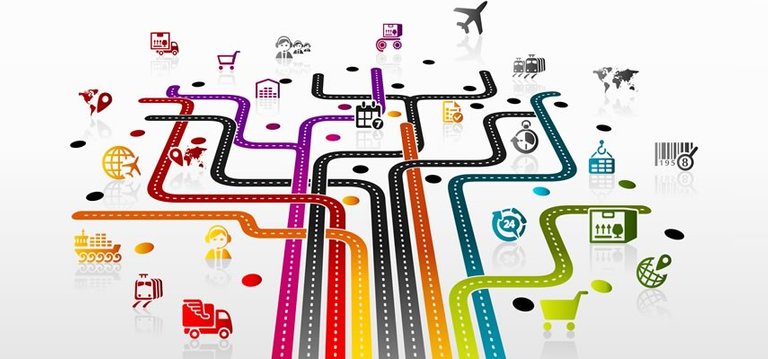I was in transport & distribution for 20 years, and in retirement still keep in touch with developments by subscribing to a newsletter.
The blockchain is the technology of the moment and future for many industries and services and moving goods around the world will be one of the biggest beneficiaries it is claimed.
I remember that the rapid growth of new computer technology in the 70s caused similar excitement and made possible ‘Just-in-Time’ stock control. It was a Japanese idea introduced to car manufacturing.
Designed to minimise money tied up in parts holding. Computers were programmed to place parts replenishment orders timed to be delivered just as the last item started down the production line, or final product left a shop’s shelves.
With the many hold ups that transport can encounter that ideal was rarely if ever achieved. The cost of an idle assembly line, or a shop losing sales, had to be balanced against the cost of holding a safety net of replenishments.
But it did bring focus and attention to an area where little thought had been given previously: The cost of overstocking by the ‘better safe than sorry’ relaxed approach.
I wrote in an earlier post how the blockchain will eliminate many middlemen operations and save time and substantial costs.
Now a case study to demonstrate the technology in action was featured in the latest transport & distribution newsletter summarised below -
Commonwealth Bank has demonstrated a combination of new blockchain distributed ledger technology, smart media contracts (SMTs) and the internet of things (IoT) to improve the sharing of information across global supply chains.
CBA formed a partnership with worldwide agriculture product distributor - Olam Orchards Australia Pty Ltd - Pacific National for rail haulage - port landlord Port of Melbourne - stevedore Patrick Terminals - shipping carrier OOCL Limited - and IoT provider LX Group - to track the shipment and delivery of seventeen tonnes of Almonds from Sunraysia in Victoria, Australia, to Hamburg in Germany.
The partners were able to view and monitor the location of the shipment as well as view the conditions, such as temperature and humidity inside the container, via four IoT devices.
The blockchain made it possible for the partners to upload and access key documents, such as bill of lading, certificates of origin and other documents required by customs.
Melissa Poon, general manager for trade and development at the Port of Melbourne, says: “Emerging blockchain technology creates the potential for multi-beneficial productivity gains to Australia’s supply-chain.
Through understanding volume loads and shipments coming down the supply chain, we can prepare strategies to meet the trade demands of the future. We are excited to be involved in such a ground-breaking project.”
This latest test run in the evolving project follows on from a collaboration between CBA and Wells Fargo in 2016 which entailed a DLT-based interbank open account transaction on a shipment of cotton from Texas, USA to Qingdao, China.
Exciting developments!
Next time – The replacement of old style ‘Sit alongside Nelly’ job training with structured classroom lessons, demonstrations, and practical ‘On the Job ‘training.

Interesting article! I don't have the knowledge to fully understand how blockchain tech can enhance supply chain efficiency, but I guess it could have to do with smart contracts that hedge against certain outcomes.
I'm thinking there might come a time when, rather than keeping an inventory of parts, they are printed on a 3D printer as they are needed. Or maybe the entire item is 3D printed rather than constructed from parts. And maybe everything is printed or constructed by nanobots right inside a box in our house. I think you wrote about something like this in the past on here!
Thank you Kenny. What a good memory. I did write about 3D printers. I agree, I think they will increasingly be popular for parts printing for many industries and services, particularly for things like prosthetic limbs.
There is always a downside. It is feared they will be used to print guns!
https://steemit.com/future/@ijavee/how-to-print-a-motor-bike